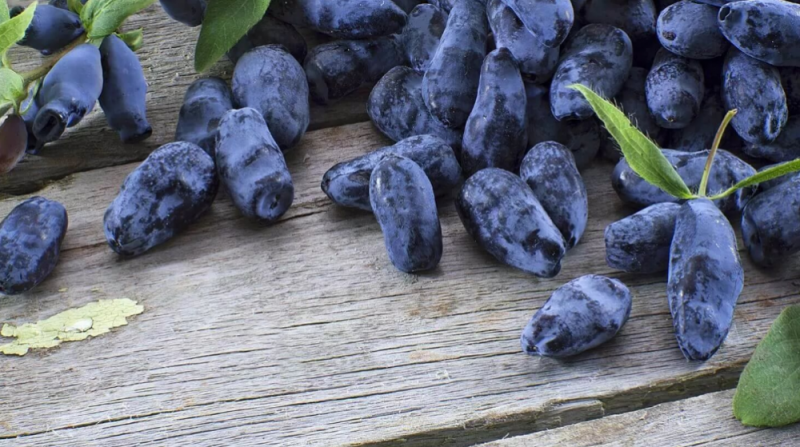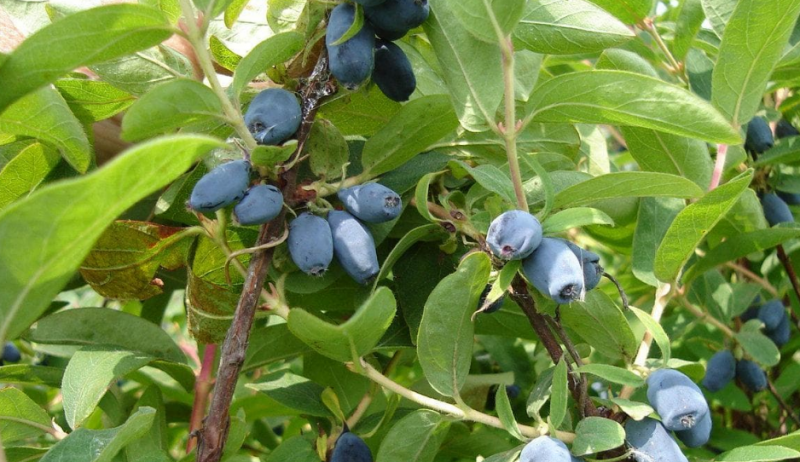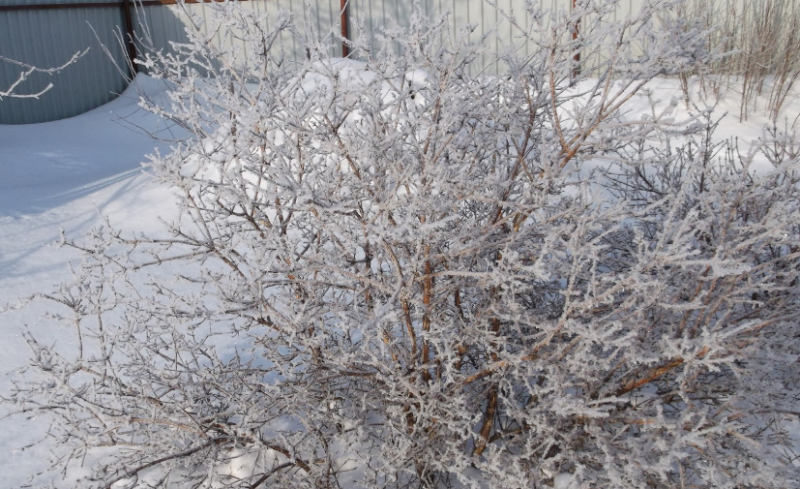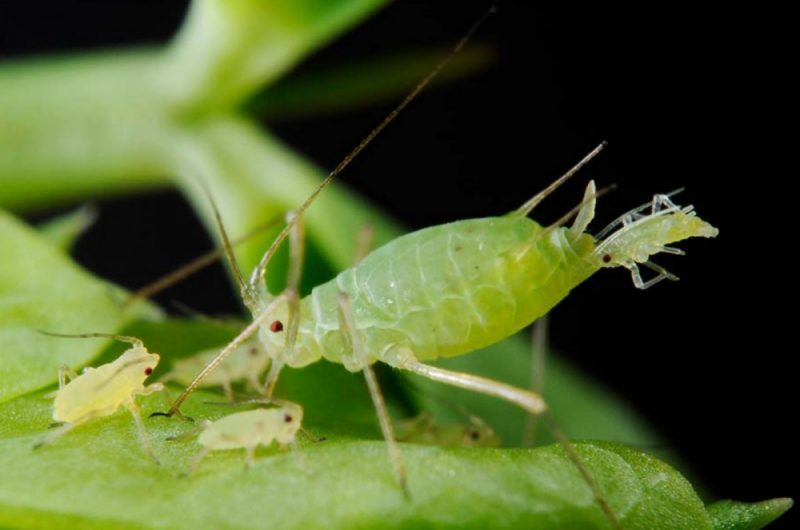Due to its unpretentiousness, one of the most sought-after berry growers among gardeners of the country is the honeysuckle "Morena".
Material Content:
Description of honeysuckle varieties "Morena"
A beautiful name translated from Spanish means “brunette”, however, this northern berry also has another nickname - “The Little Mermaid”. The hybrid was received at the Pavlovskaya station, and Kamchatka honeysuckle became one of its parents.
The bush is distinguished by a lush, but slightly squat crown and good tolerance even to severe frosts.
Variety Description:
- reaches more than one and a half meters in height and about the same in width;
- the crown is oval, slightly flattened;
- leaves are large;
- elastic shoots with a beautiful bend.
This honeysuckle is early - berries ripen by the third week of summer. In the southern latitudes, the crop is harvested in early June. The fruits are very large, up to 3 cm, with excellent dessert taste. On average, they gather up to 2.5 kg from one bush.
The peculiarity of the variety is that its productivity depends on the temperature of the air. The plant tolerates frosts well to -40 ° C, can withstand even late frosts to -7 ° C. The bush can live and show good fruiting in one place without a transplant for about 25 years.
Representatives of the variety are very decorative, and they are often planted, organizing the design of the garden.
Recommended Pollinators
Culture is self-infertile. To harvest each year, not far from it should be planted other pollinating varieties that will coincide with it in terms of budding.
Pollinators of honeysuckle "Morena":
- "Blue Spindle";
- "Amphora";
- "Malvina";
- "Viola".
Shrubs need to be planted in small curtains, alternating them on the windward side of the pollinated specimen.Then, through the movement of air masses, it will be pollinated.
How and when to plant a bush
This is a very non-capricious plant that can grow even on poor soil. Honeysuckle planting is preferred in September, as it wakes up very early in the spring. It will grow well and bear fruit in a sunny place.
When planting, the distance between the plants is about 2 meters.
Aisles should be even wider:
- Dig a pit 45 cm deep and 45 cm wide.
- Fill the hole with compost or manure, spending about 1 bucket. You can add other fertilizers, for example, superphosphate.
- Place the seedling in the hole and fill it with soil. In this case, the neck should be deepened by 3 cm.
- Tamp and shed.
- When the earth settles, fill the seedling with earth and mulch.
You can not refuse mulching, since mulch reduces the evaporation of moisture and prevents weed grass from germinating, which greatly facilitates care.
Features of outdoor care.
The variety is self-fertile, therefore, after planting additional pollinating bushes, insects, especially bumblebees, should be taken care of. You can put plates of honey near the landing.
This crop needs regular watering. It is especially important to moisten the soil during flowering and ripening of berries. Do not water excessively, as the roots may begin to rot. One bush is enough to spend about a bucket of water. On hot days, its volume is increased to 2 buckets.
Not the last role in the care of honeysuckle is feeding. Use mainly organics:
- Manure and humus, which are applied only once every 3 years, have a good effect. Fertilizers close up in the soil in the early spring or in November.
- Mineral fertilizers give a quick-acting effect. Minerals are useful in early spring. Contribute to nitrate or superphosphate.
- If the bush during planting was well seasoned with fertilizers, the first two years it is not necessary to feed it.
- In order for the honeysuckle to bear fruit well, once a year an ash solution is introduced under it. To do this, a liter of ash is bred in a bucket of water and plants are added to the root.
We must not forget to remove weeds around the bushes and loosen the soil. But this should be done carefully, only to a depth of approximately 7 cm. The fact is that in representatives of the culture the root system is close to the surface, and when loosened to a greater depth, it can be easily damaged. It is most convenient to weed and loosen the day after watering. After completing the procedure, the earth around the specimen should be mulled.
Large-fruited edible honeysuckle bears fruit only on young branches. Old ones should be cut off. Shrubs are cut every 3 years, cutting mostly already dried branches. If the plant has enough moisture, it will very quickly give new shoots.
If the shrub is very old, it can be easily rejuvenated by cutting off all unnecessary and leaving only the main trunk. Place the cuts sprinkled with charcoal.
Berry picking, storage
This variety is good in that the crumbling of berries is low. Do not pick fruits as soon as they turn blue - they need to give time to gain sweetness. After that, under the bush, spread the fabric and shake off the crop.
Honeysuckle is almost impossible to keep for a long time, even in the refrigerator, so its berries quickly crumple and let the juice go. Therefore, after collection, they should immediately be consumed or frozen.
From the fruits of the culture, delicious compotes and jams are cooked, various sweet preparations are made for the filling of baking, jam is made from a mixture with other fruits.
How to care in winter
The variety "Morena" is very winter-resistant and can survive frosts even up to -45 ° С. The root system of the plant tolerates winter well. Shrubs do not need any special care during this period.
The only exception is the plants of the first year of planting. It is advisable to sprinkle sawdust with their sawdust circles to protect the roots that have not yet been strengthened from freezing.
Diseases, pests and methods of dealing with them
Growing honeysuckle varieties "Morena" rarely causes trouble, since this plant is resistant to the onset of diseases, and insect pests do not really like it. But still, some problems can happen.
- The main enemy of the variety is aphids. The first sign that this pest has attacked the bush is curl of leaves and their drying. Aphids live in colonies on plants and quickly suck out juices. Culture because of their attack is rapidly losing its attractive appearance, changing its color, becoming brownish. By treating honeysuckle with Actellik or Confidor, you can save it.
- Found on shrubs and leafworm. The danger is mainly caterpillars. This insect appears when the berries begin to ripen, and sucks the juice from the plant, which may even die as a result.
- Very rarely, honeysuckle is attacked by scale insects feeding on juices from the bark. In this case, the shrub should be carefully treated with Fitoverm.
Due to excessive watering or due to damp, rainy weather during the summer, the rhizome can rot. In this case, you should try to transplant the specimen to a new place where water does not stagnate. When transplanted, the diseased parts are cut off, and after that, they regulate the irrigation schedule.
Honeysuckle is so unpretentious and unpretentious in leaving that even the most inexperienced gardener will cope with its cultivation. To taste the northern berries, you don’t have to make special efforts and spend a lot of time working on the site. Cultivating such a culture is a very grateful work.


















